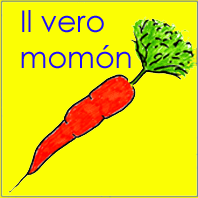
Since the jury is still out on the iron/heart disease relationship, it is still too early to make recommendations about changing iron in the diet to protect against heart disease. This is especially true since iron deficiency is a common problem in this country. The best advice to prevent heart disease is still to make changes that reduce known risk factors, like limiting fat and cholesterol in the diet, exercising, and not smoking.
Hemochromatosis, an iron overload syndrome, afflicts about one in every 200 to 500 Americans. This is a genetic disorder that causes the body to absorb large amounts of iron that it does not need. Excess iron gets stored in the liver, heart, and pancreas, where it often goes undetected until mid-life when iron levels reach 5 to 50 times normal amounts. The initial symptoms, fatigue, achy joints, and weakness, are sometimes misinterpreted as iron deficiency. Severe health problems like liver disease can result. Early identification and treatment are the way to go. Some doctors believe almost everyone should be tested for this disorder. Most recommend getting tested if you have a family history of the disease or have any symptoms which have not been successfully explained and treated. Blood tests called serum ferritin and transferrin saturation, which together cost about $75 to $100, help identify whether you are storing too much iron. Treatment is relatively simple. It involves getting rid of excess iron by drawing blood, and avoiding iron supplements and foods highly fortified with iron.
To prevent iron deficiency, every effort should be made to maximize iron from food sources. A good diet will safely help decrease the risk of inadequate iron and at the same time cause the least potential damage to those at risk for iron excess. A well planned vegetarian diet provides adequate iron.
Vegetables: broccoli, brussels sprouts, cabbage, cauliflower,
dark leafy greens, kohlrabi, potato (white or sweet),
sweet pepper, tomatoFruits: cantaloupe, cranberry juice, grapefruit, guava,
honeydew melon, mango, orange, papaya, strawberries,
tangerine, watermelon
Cooking with iron pots can significantly increase the iron content of food. This is especially true when cooking acidic foods like tomatoes. If you are still not sure you are getting adequate iron, have your diet evaluated by a registered dietitian.
The golden rule, still, is that it is best to get the nutrients your body needs, including iron, from the food you eat. A well planned vegetarian diet can provide adequate iron, minimizing the risk of iron deficiency. (See chart below.) This provides the least potential harm to those at risk for iron overload. It is still too early to tell whether limiting iron in the diet will protect against heart disease.
Dwyer JT. Health aspects of vegetarian diets. American Journal of Clinical Nutrition. 1988; 48: 712-738.
Edwards CQ, Griffen LM, Kushner JP. Disorders of excess iron. In: Herbert V. Diagnosis and Treatment of Iron Disorders. Hospital Practice. 1991; 26[suppl 3]: 30-36.
Expert Scientific Working Group. Summary of a report on assessment of the iron nutritional status of the United States population. American Journal of Clinical Nutrition. 1985; 42: 1318-1330.
Fairbanks V. Laboratory testing for iron status. In: Herbert V. Diagnosis and Treatment of Iron Disorders. Hospital Practice. 1991; 26[suppl 3]: 17- 24.
Food and Nutrition Board. Recommended Dietary Allowances. Washington, D.C.: National Academy Press; 1989.
Gambino R. Routine screening for iron status. In: Herbert V. Diagnosis and Treatment of Iron Disorders. Hospital Practice. 1991; 26[suppl 3]: 41- 44.
Green R. Disorders of inadequate iron. In: Herbert V. Diagnosis and Treatment of Iron Disorders. Hospital Practice. 1991; 26[suppl 3]: 25-29.
Herbert V. Should everyone be tested for iron disorders? Journal of The American Dietetic Association. 1993; 93: 1502-1509.
Monsen, ER. Iron nutrition and absorption: Dietary factors which impact iron bioavailability. Journal of The American Dietetic Association. 1988; 88: 786- 790.
Morck TA, Lynch SR, Cook JD. Inhibition of food iron absorption by coffee. American Journal of Clinical Nutrition. 1983; 37: 416-420.
Mutch PB. Food guide for the vegetarian. American Journal of Clinical Nutrition. 1988; 48: 913-919.
Pennington JAT. Bowes and Church's Food Values of Portions Commonly Used. New York: Harper & Row; 1989.
Position of The American Dietetic Association: Vegetarian diets - technical support paper. Journal of The American Dietetic Association. 1988; 88: 351- 355.
Position of The American Dietetic Association: Vegetarian diets. Journal of The American Dietetic Association. 1993; 93: 1317-1319.
Salonen JT, Nyyssonen K, Korpela H, Tuomilehtl J, Seppanen R, Salonen R. High stored iron levels are associated with excess risk of myocardial infarction in eastern Finnish men. Circulation. 1992; 86: 803- 811.